Green Tomato Gold: A Small-Batch Recipe for Tangy Green Tomato Relish from Your End-of-Season Balcony Harvest
As the days shorten and a crispness enters the air, many small-space gardeners face a familiar challenge: a bounty of beautiful, unripened green tomatoes still clinging to their vines. You nurture your container plants all season, expecting luscious red fruit, but nature often has other plans for your end of season harvest. Do not despair. Those firm, green gems are not a sign of defeat, but an invitation to create something truly special. This article guides you through transforming those last-of-the-season container treasures into a vibrant, tangy green tomato relish, perfect for small batch preserving. You will discover an easy green tomato relish recipe for small harvest, turning potential waste into a delicious culinary delight.
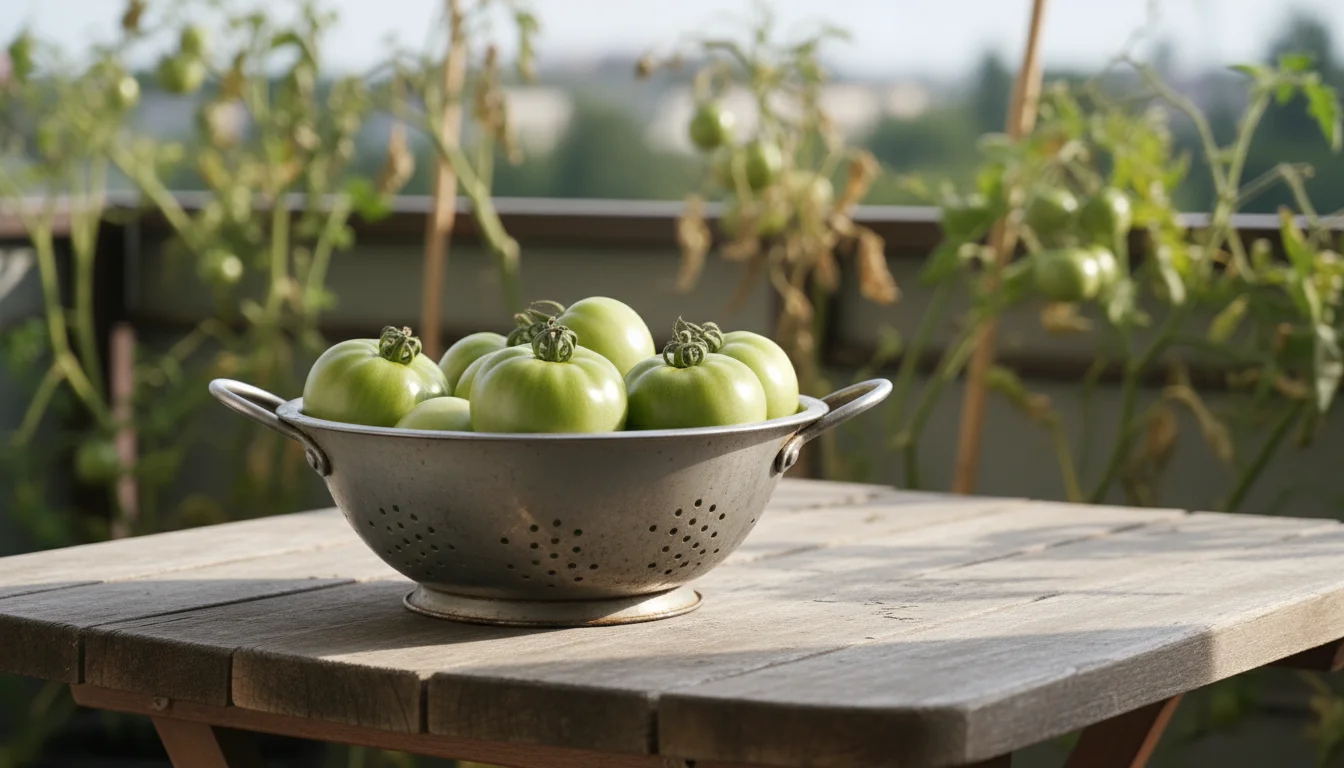
The Unsung Hero: Why Green Tomatoes Shine (Even Unripe)
Many gardeners view green tomatoes as merely “unripe,” anticipating their eventual transformation to red. However, these firm, tart fruits possess a unique flavor profile that sets them apart. Unlike their sweet, ripe counterparts, green tomatoes offer a crisp texture and a bright, acidic zing. This inherent tang makes them an ideal candidate for savory preparations, especially relishes, chutneys, and fried dishes. For those of us with container plants, the end of season harvest often leaves us with numerous green tomatoes that simply will not ripen before frost. Instead of composting them, embrace their distinct character.
Considering your limited space, maximizing every bit of your harvest is crucial. Turning these green tomatoes into relish is a practical way to extend your gardening efforts and enjoy your homegrown produce long after the growing season ends. It prevents waste and transforms what some might see as a disappointment into a triumph. This approach aligns perfectly with sustainable gardening practices, ensuring that your hard work in nurturing your balcony vegetables yields delicious returns.
The culinary world celebrates green tomatoes for their versatility. Their firm flesh holds up well to cooking, and their sharp taste provides an excellent counterpoint to rich flavors. When you choose to make a green tomato recipe like relish, you are not settling for second best. You are intentionally creating a condiment that brings a refreshing tartness and complexity to many meals, a testament to the unique qualities of these unripe treasures.
Furthermore, using your green tomatoes from container plants for relish means you are actively participating in a tradition of resourceful cooking. Historically, communities have utilized every part of their harvest, adapting to what nature provides. This small batch preserving method allows you to connect with that tradition, bringing a homemade touch to your kitchen with minimal effort and maximum flavor.
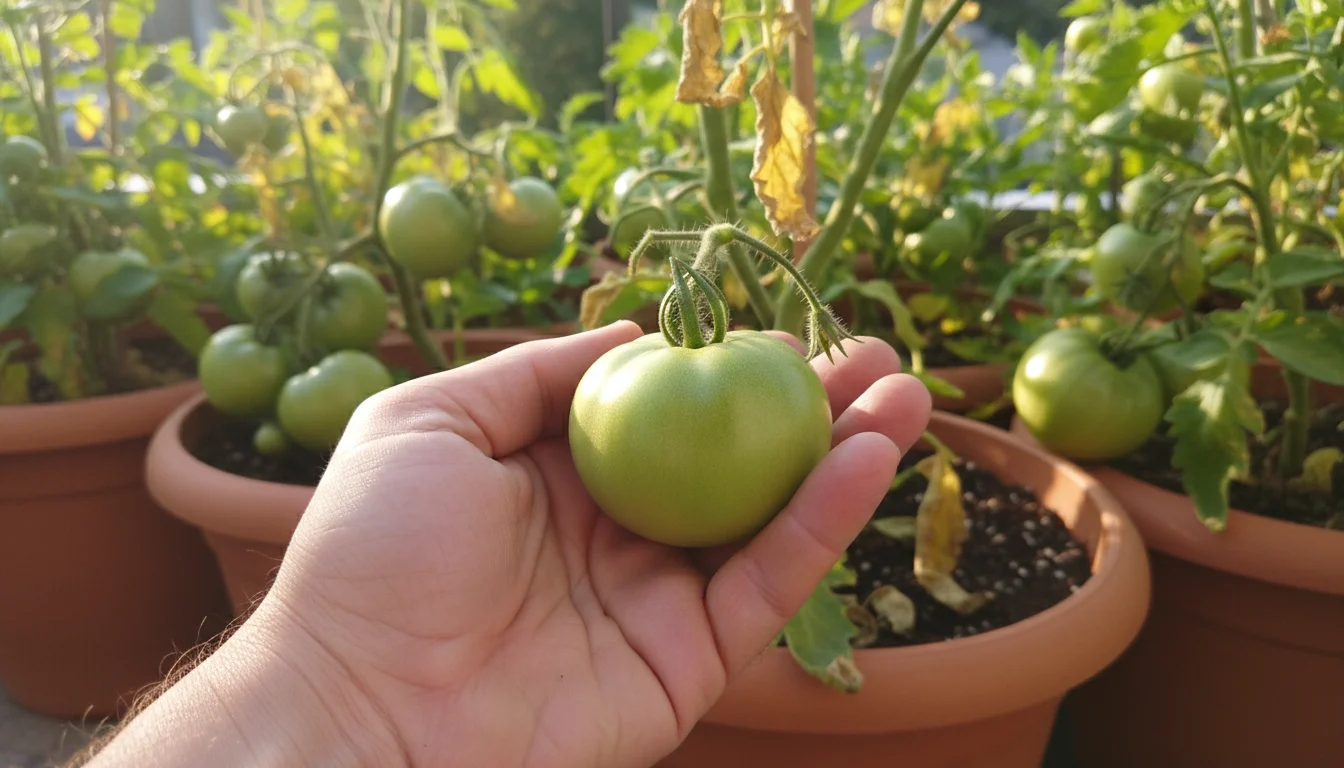
Your Balcony Bounty: Identifying Relish-Ready Green Tomatoes
Not every green tomato is destined for relish, but most are perfect candidates. When you inspect your end of season harvest, look for green tomatoes that are firm to the touch and free from any significant blemishes, soft spots, or signs of disease. The size generally does not matter much for relish, as you will chop them. Whether you have small cherry tomatoes that never colored up or larger beefsteak varieties that stubbornly remain green, all can contribute to your delicious green tomato recipe.
You can use any variety of tomato as long as it is green. Some indeterminate varieties, like ‘Brandywine’ or ‘Celebrity’, might produce larger green fruits, while determinate varieties, often grown in containers, could give you smaller, more uniform green tomatoes. Both work beautifully. The key is their texture and health. Avoid any tomatoes that show signs of mold, extensive cracking, or severe insect damage, as these can affect both the taste and safety of your relish. A minor blemish you can simply cut away, but overall, you want healthy fruit.
To harvest your green tomatoes for relish, simply snip them from the vine using clean pruning shears or a sharp knife. This prevents damage to the plant if it still has other fruits developing. If a hard frost is imminent, harvest all remaining green tomatoes. A light frost might only damage the leaves, but a hard freeze will ruin the fruit. Bringing them indoors before temperatures drop below freezing ensures you maximize your preserving balcony vegetables.
Once harvested, a quick rinse under cool water is usually sufficient to clean them. There is no need for scrubbing, just remove any surface dirt. Prepare to transform these vibrant, tart fruits into a delicious condiment that will surprise and delight your palate. This straightforward approach to selecting and preparing your green tomatoes ensures a successful and flavorful batch of relish every time, turning what might have been a garden afterthought into a highlight of your culinary year.
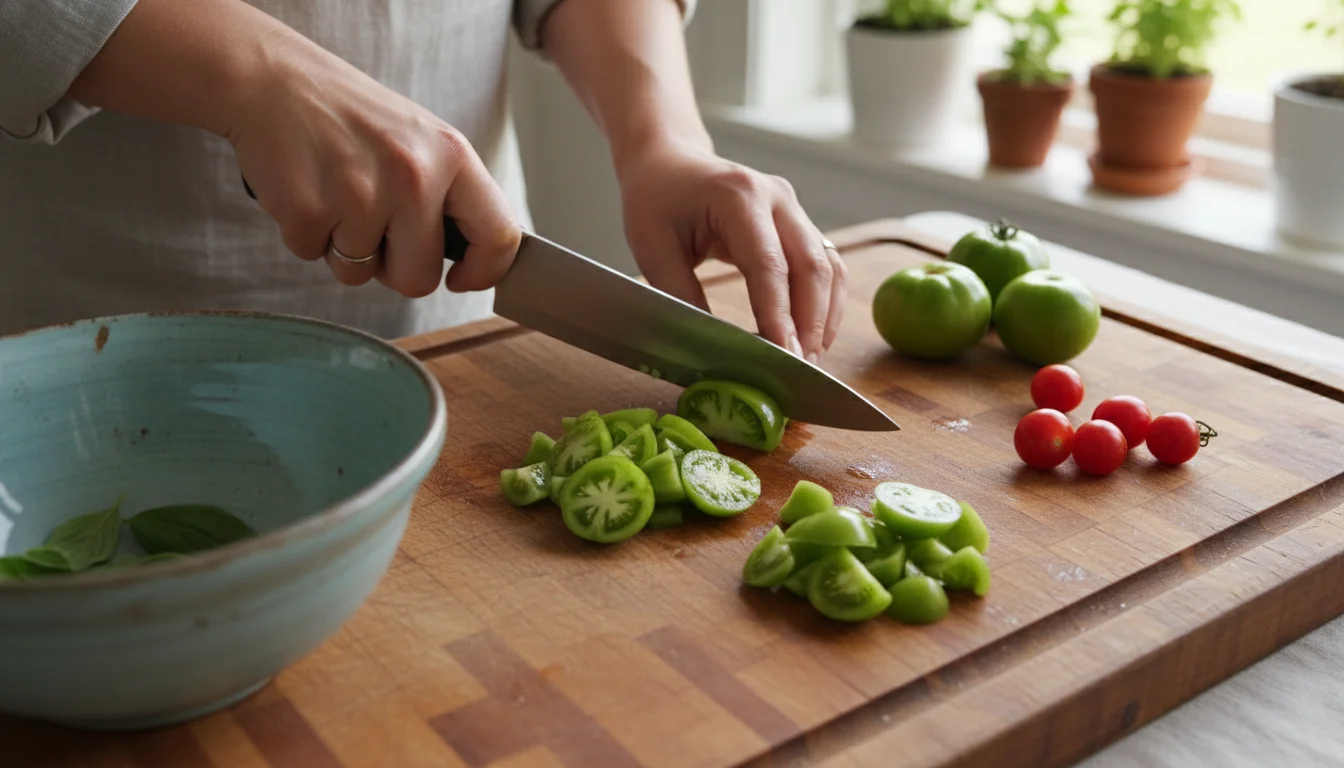
Beyond the Basics: Essential Tools for Small-Batch Preserving
One of the beauties of small batch preserving is that you do not need an extensive collection of specialized equipment. Many of the tools required for this easy green tomato relish recipe for small harvest are likely already in your kitchen. This makes it an accessible project for any gardener, especially those with limited space who prefer not to clutter their homes with single-use gadgets.
Here is a list of the essential tools you will need to prepare your green tomato relish:
- Large Cutting Board: You will be chopping a good amount of vegetables. A spacious, stable cutting board makes this task much easier and safer.
- Sharp Chef’s Knife: A good knife is indispensable for efficiently dicing your green tomatoes and other vegetables. A dull knife is actually more dangerous, requiring more force and increasing the risk of slips.
- Large Non-Reactive Pot (Stainless Steel or Enamel-Coated): This is where your relish will cook. Non-reactive means it will not interact with the acidic ingredients, preventing metallic flavors. Aim for a pot that holds at least 6-8 quarts for comfortable stirring and to prevent boil-overs.
- Measuring Cups and Spoons: Accuracy in a green tomato recipe is important, especially when balancing flavors.
- Large Bowl: You will need this for salting your chopped green tomatoes, a crucial step we will discuss soon.
- Colander: Essential for draining the liquid after salting your vegetables.
- Clean Jars with Lids: For storing your finished relish. Half-pint or pint jars are ideal for small batch preserving. Ensure they are sterilized before use. You can sterilize jars by washing them thoroughly in hot, soapy water, rinsing well, and then placing them in boiling water for 10 minutes. Alternatively, run them through a hot cycle in your dishwasher. Keep them hot until you are ready to fill them.
- Ladle: For safely transferring hot relish into jars.
- Jar Funnel (Optional but Recommended): This helps prevent spills when filling jars, keeping your workspace cleaner.
- Stirring Spoon or Spatula: A heat-resistant spoon for mixing ingredients in the hot pot.
You can certainly make a delicious relish without every single item on this list, but these tools make the process smoother and more enjoyable. Remember, the goal is to make preserving balcony vegetables a joy, not a chore. With these basic tools, you are well-equipped to transform your end of season harvest into a delightful pantry staple.

Green Tomato Relish: The Small-Batch Recipe You’ll Love
This easy green tomato relish recipe for small harvest yields approximately 4-6 half-pint jars, perfect for enjoying throughout the cooler months without overwhelming your pantry space. The process is straightforward, focusing on enhancing the natural tang of the green tomatoes with a balance of sweet, sour, and aromatic spices.
Yields: Approximately 4-6 half-pint jars
Prep time: 30 minutes (plus 1-2 hours for salting)
Cook time: 45-60 minutes
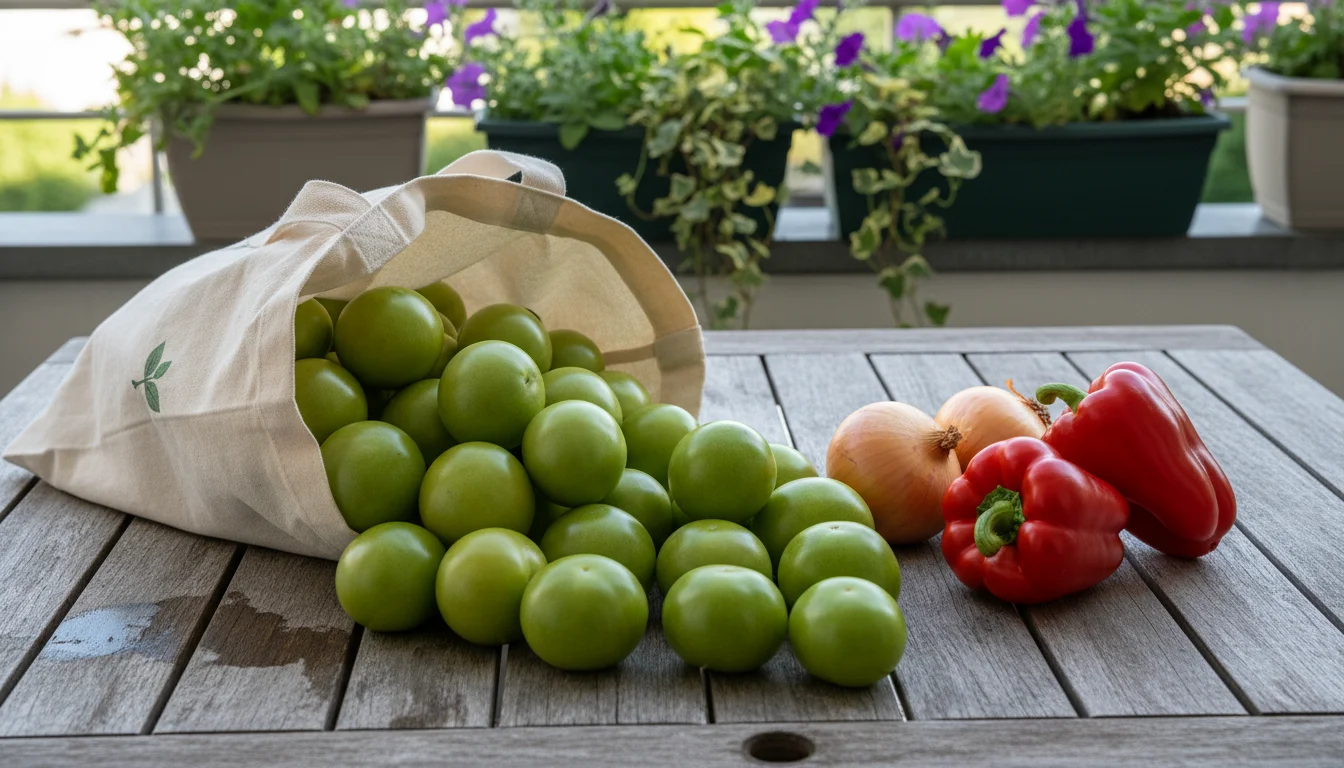
Ingredients:
- 5 pounds green tomatoes, firm and unblemished (from your container plants)
- 2 large yellow onions, finely diced
- 2 red bell peppers, finely diced
- 1/2 cup pickling salt (or kosher salt, do not use iodized table salt)
- 2 cups apple cider vinegar
- 1 1/2 cups granulated sugar
- 1 tablespoon mustard seeds
- 1 teaspoon celery seeds
- 1/2 teaspoon ground turmeric
- 1/4 teaspoon ground cloves
- 1/4 teaspoon cayenne pepper (optional, for a subtle kick)
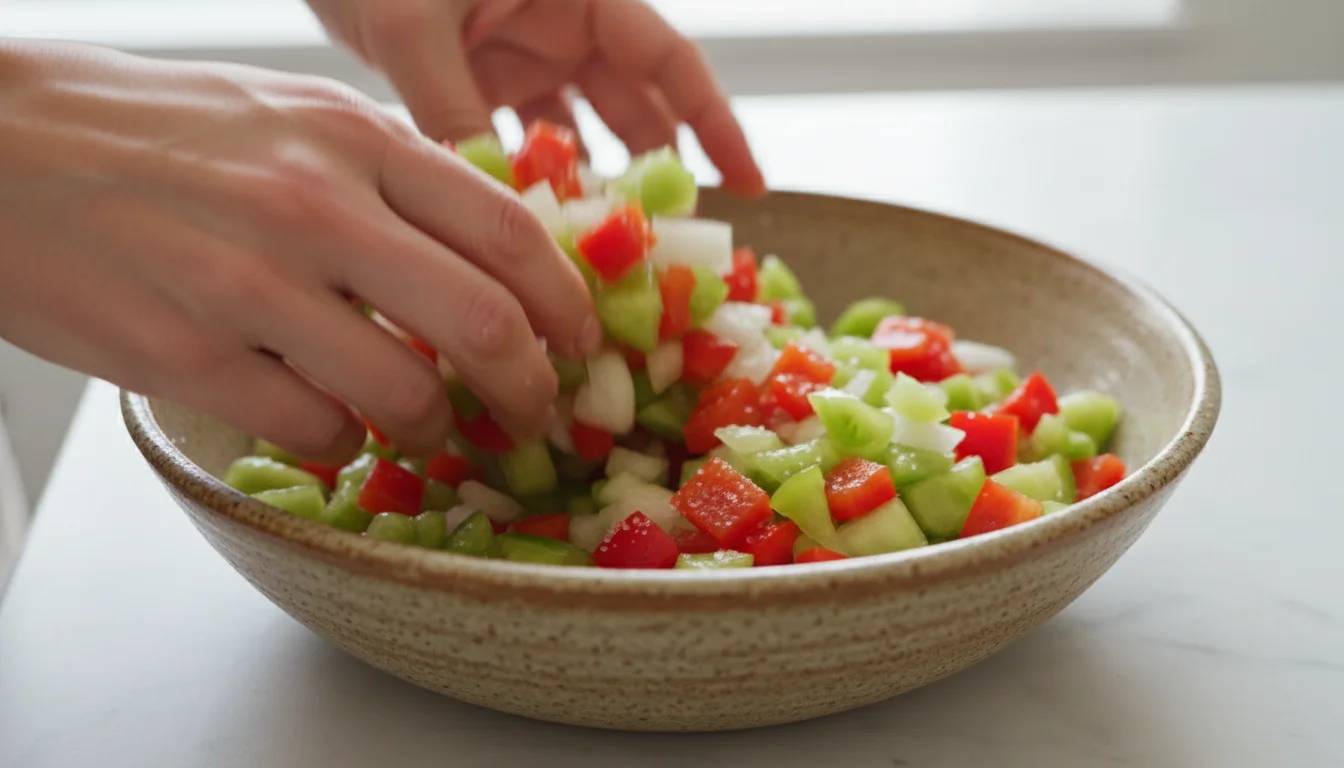
Instructions:
- Prepare the Vegetables: Wash your green tomatoes thoroughly. Remove the stem ends. Dice the green tomatoes, onions, and red bell peppers into small, uniform pieces, roughly 1/4 to 1/2 inch. Consistency in size helps ensure even cooking.
- Salt and Drain: Place the diced green tomatoes, onions, and bell peppers in a large bowl. Sprinkle them evenly with the pickling salt, tossing gently to combine. Cover the bowl with a clean cloth or plastic wrap and let it stand at room temperature for 1-2 hours. This crucial step draws out excess moisture from the vegetables, ensuring your relish is not watery and has a concentrated flavor.
- Rinse and Drain Thoroughly: After salting, transfer the vegetable mixture to a colander. Rinse it very well under cold running water, tossing the vegetables to remove as much salt as possible. Taste a small piece to ensure it is not overly salty. If it is, rinse again. Once rinsed, press out as much remaining liquid as you can. You can gently squeeze handfuls or press the vegetables against the side of the colander. This step is vital for the relish’s texture and safety.
- Combine and Cook: In your large, non-reactive pot, combine the drained vegetables, apple cider vinegar, granulated sugar, mustard seeds, celery seeds, turmeric, ground cloves, and cayenne pepper (if using). Stir everything well to combine.
- Simmer to Perfection: Bring the mixture to a boil over medium-high heat, stirring occasionally. Once boiling, reduce the heat to low and simmer gently for 45-60 minutes. Stir frequently to prevent sticking, especially as the relish thickens. The relish is ready when the vegetables are tender, and the liquid has thickened to your desired consistency. It should be syrupy, coating the back of a spoon.
- Prepare Jars: While the relish simmers, ensure your half-pint or pint jars and lids are sterilized and hot. Keep them warm until ready to fill.
- Fill Jars: Carefully ladle the hot relish into the hot, sterilized jars, leaving about 1/2 inch of headspace (the space between the relish and the rim of the jar). Remove any air bubbles by gently tapping the jars on the counter or running a clean, non-metallic utensil around the inside edge of the jar. Wipe the rims of the jars clean with a damp cloth. This ensures a proper seal.
- Seal and Cool: Place the lids and screw bands on the jars, tightening them finger-tight (do not overtighten). For immediate use, allow the jars to cool completely on your counter. Once cool, check for seals by pressing the center of the lid; it should not flex. Store unsealed jars in the refrigerator and consume within 2-3 weeks. For extended shelf life, you can proceed with a hot water bath canning method, detailed in the next section, which extends shelf life to several months.
This green tomato recipe provides a fantastic foundation. Feel free to adjust the spices to your preference. Some gardeners enjoy a touch of ginger, a hint of allspice, or even a chopped jalapeño for more heat. The beauty of making your own relish from your end of season harvest is customizing it to your taste.
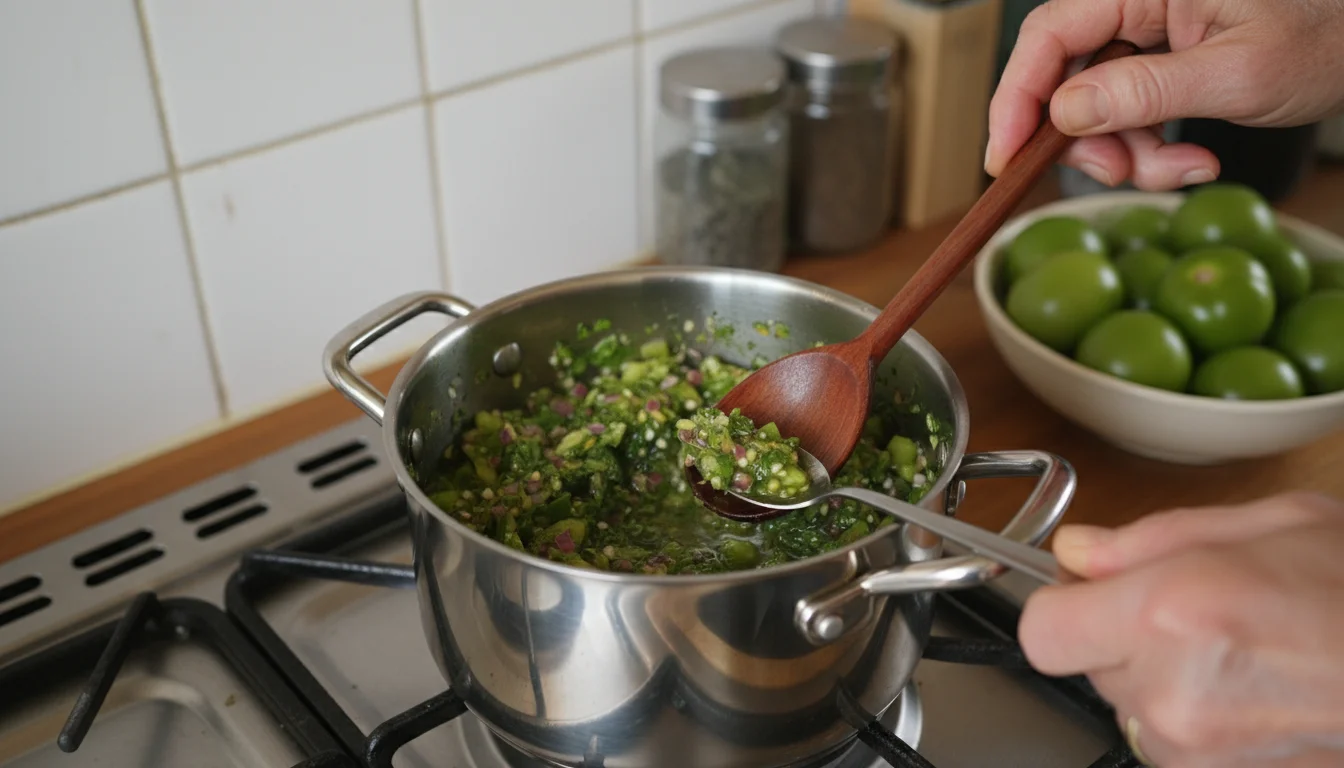
Mastering the Art of Relish: Key Techniques and Troubleshooting
Making relish from your preserving balcony vegetables is more art than science, but understanding a few key techniques ensures a consistently delicious product. Even with an easy green tomato relish recipe for small harvest, knowing these tricks elevates your results and helps you troubleshoot common issues.
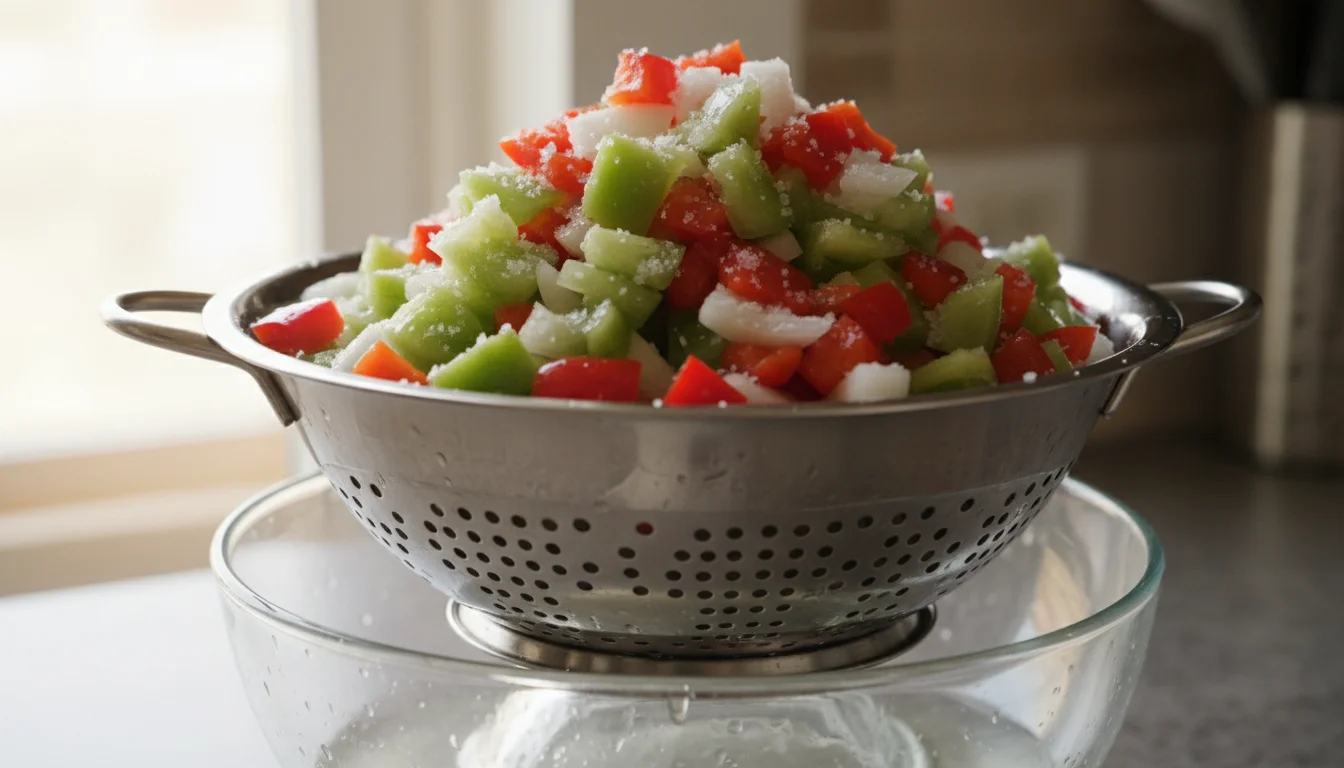
Key Techniques:
- The Importance of Salting: As mentioned in the recipe, salting your chopped vegetables for 1-2 hours is not an optional step. This process, called osmosis, draws out a significant amount of water from the tomatoes and onions. If you skip this, your relish will be watery, dilute in flavor, and may not thicken properly. It also contributes to a crisper texture in the finished product. Always rinse thoroughly after salting to avoid an overly salty relish.
- Uniform Chopping: Strive for uniform dice sizes for your green tomatoes, onions, and peppers. This ensures all vegetables cook evenly, reaching tenderness at the same time. Inconsistent sizes lead to some pieces being mushy while others remain too firm. A good sharp knife and patience are your best friends here.
- Balancing Flavors: Relish relies on a harmonious blend of sweet, sour, and savory. The acidity from the green tomatoes and apple cider vinegar provides the tartness, while sugar balances it out. Spices add complexity and warmth. Taste your relish as it simmers and adjust seasonings. If it is too sour, add a little more sugar. If it is too sweet, a splash more vinegar can cut through it. Remember, flavors intensify as the relish cools.
- Achieving the Right Consistency: The cooking time for relish is flexible, depending on how thick you like it. Some prefer a thinner, saucier relish, while others like a chunkier, jam-like texture. Simmering longer allows more liquid to evaporate, resulting in a thicker relish. If it seems too thick too quickly, you can add a little more vinegar or water to reach your desired consistency.
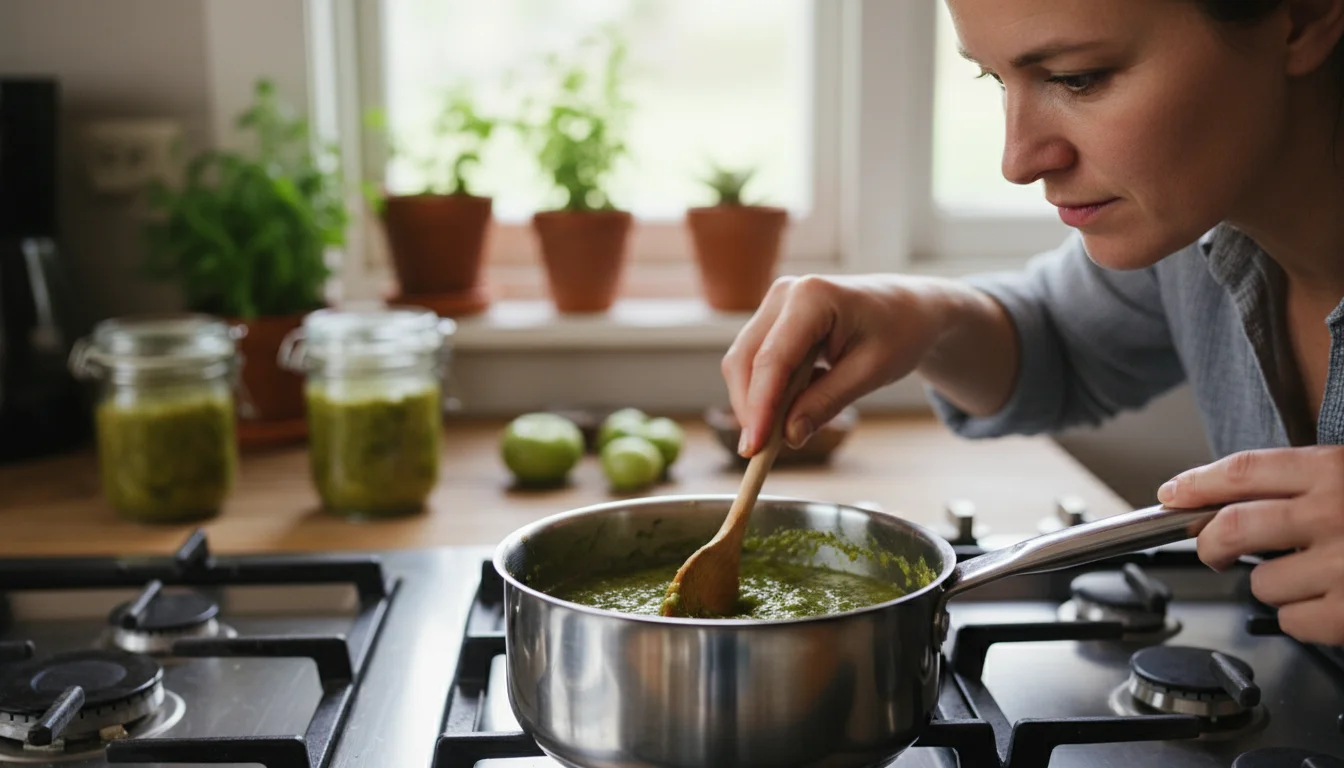
Troubleshooting Common Issues:
- Relish is Too Watery:
- Cause: Insufficient salting and draining, or not simmering long enough.
- Solution: If you notice this during cooking, continue simmering longer, stirring frequently, to allow more liquid to evaporate. Ensure your initial salting and draining steps are thorough in future batches.
- Relish is Too Salty:
- Cause: Not rinsing the vegetables adequately after salting.
- Solution: Unfortunately, it is difficult to significantly reduce saltiness once cooked. In future batches, ensure you rinse the vegetables thoroughly and even taste them after rinsing to confirm most of the excess salt has gone.
- Relish is Too Sweet or Too Sour:
- Cause: Imbalance in sugar and vinegar.
- Solution: Adjust while simmering. For too sweet, add a tablespoon or two of apple cider vinegar. For too sour, add a tablespoon or two of sugar. Taste, and adjust gradually.
- Vegetables Are Not Tender:
- Cause: Not enough simmering time or uneven chopping.
- Solution: Continue to simmer until the vegetables reach your desired tenderness. Ensure uniform chopping in subsequent batches.
Approaching your green tomato recipe with these techniques in mind will ensure your small batch preserving efforts are always rewarding. Do not be afraid to experiment and trust your taste buds. This process of what to do with green tomatoes from container plants becomes much more enjoyable when you understand the ‘why’ behind each step.
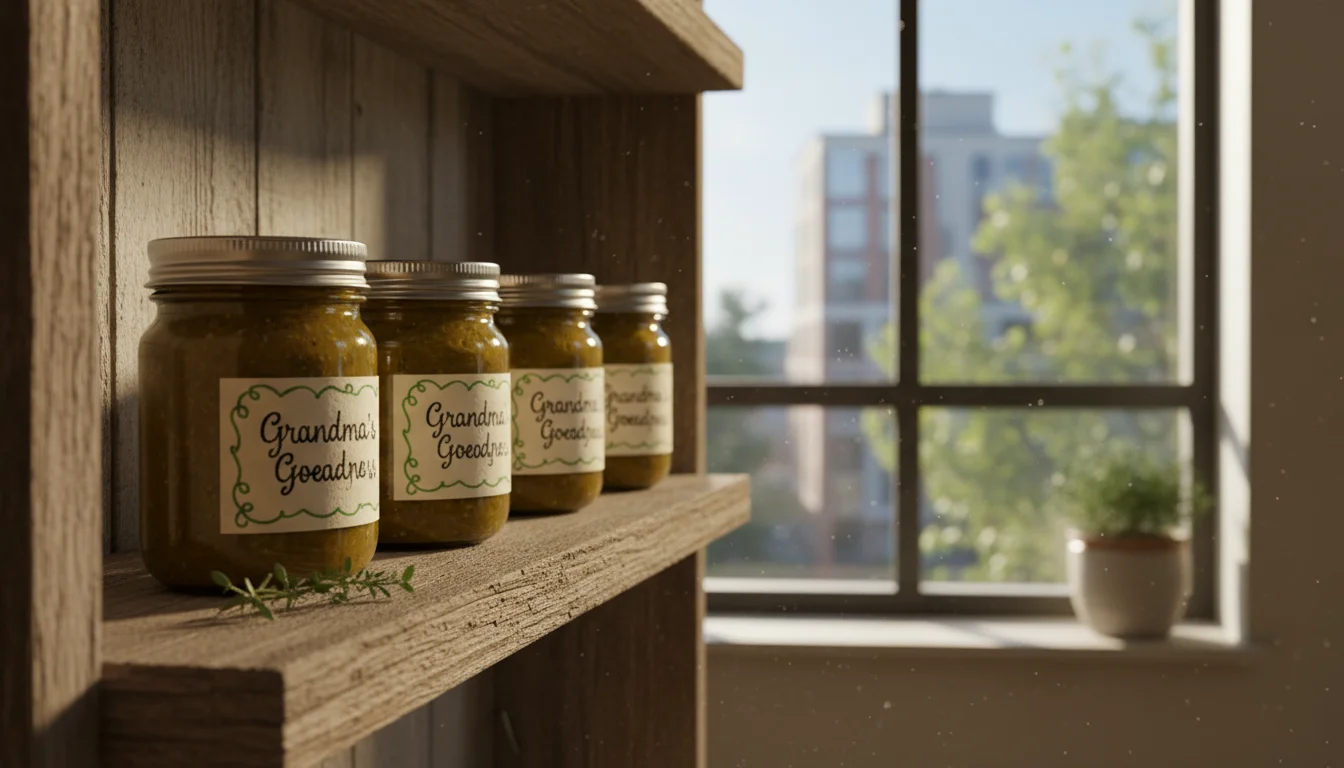
Storing Your Green Tomato Gold: Safety and Shelf Life
Proper storage ensures your easy green tomato relish recipe for small harvest remains safe and delicious for as long as possible. For small batch preserving, you have a couple of options, depending on how quickly you plan to consume your relish and whether you want to invest in traditional canning equipment.
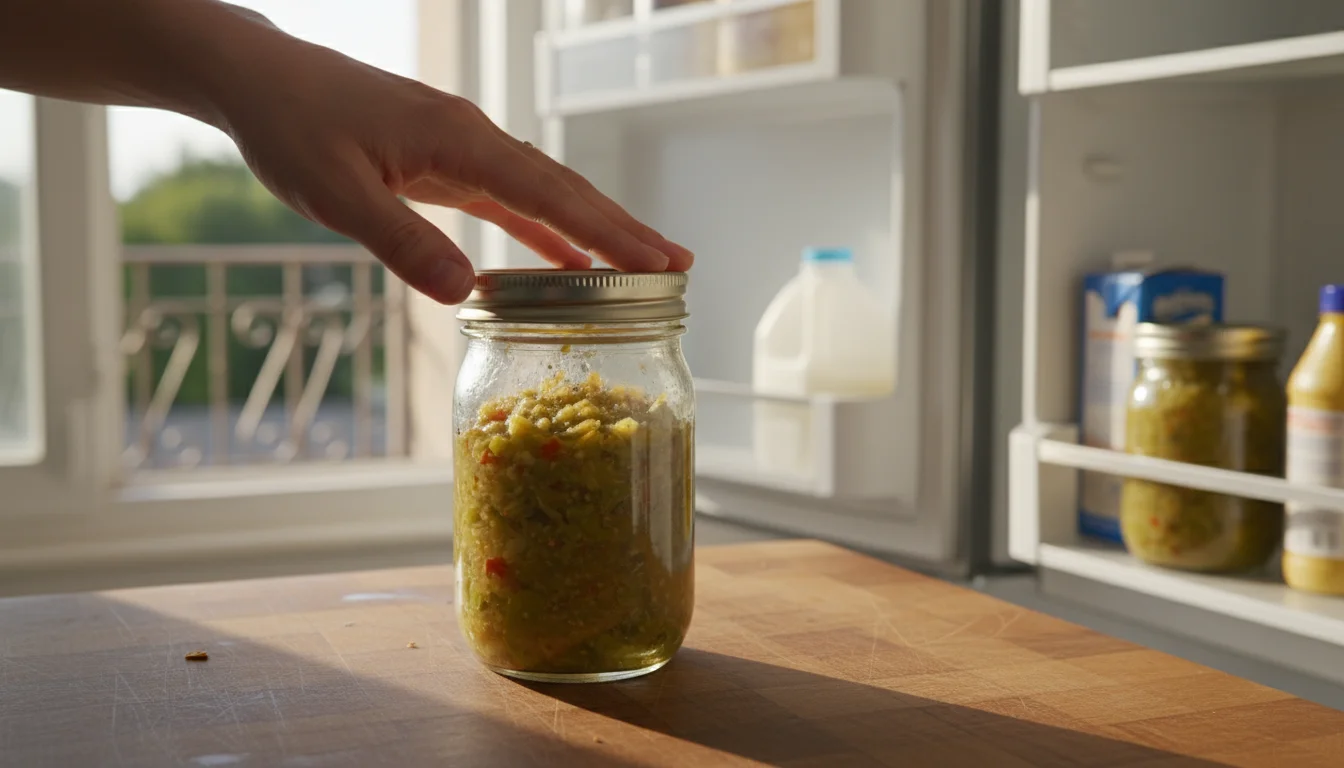
Refrigeration for Short-Term Storage:
If you made a very small batch of green tomato relish and plan to eat it within a few weeks, simple refrigeration is perfectly adequate. After filling your sterilized jars, allow them to cool completely on the counter. Once cool, check that the lids have sealed (the center of the lid should be concave and not flex when pressed). If a lid does not seal, or if you prefer not to hot water bath can, store the relish in the refrigerator. In the fridge, your homemade relish will maintain its quality for 2-3 weeks, sometimes up to a month, due to its high vinegar and sugar content, which act as natural preservatives. Always use clean utensils when scooping out relish to prevent contamination.
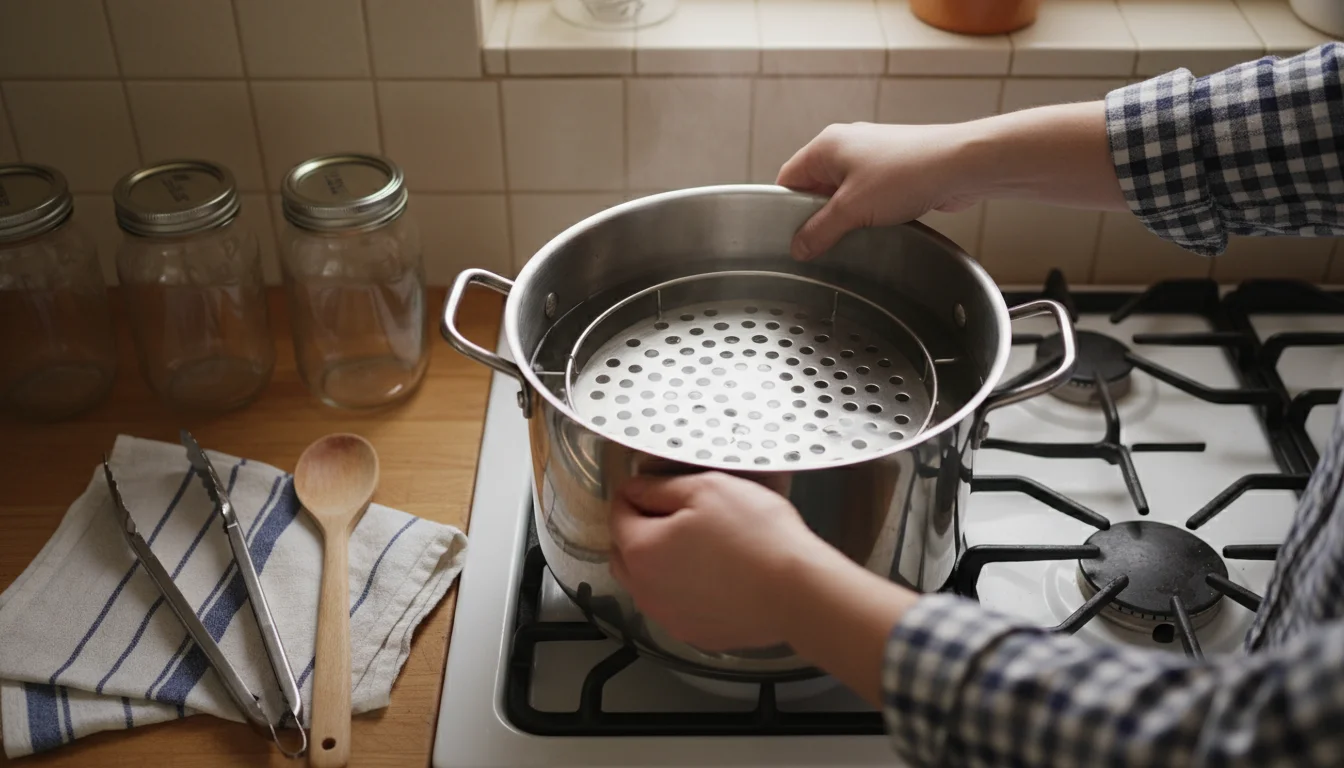
Hot Water Bath Canning for Extended Shelf Life:
For longer-term storage of your green tomato recipe, extending its shelf life for several months, hot water bath canning is the recommended method. This process creates a vacuum seal that keeps the relish safe and stable at room temperature. It is a reliable way of preserving balcony vegetables.
Here is a simplified overview of the hot water bath canning process for your relish:
- Prepare Your Canner: You will need a large stockpot with a rack on the bottom. If you do not have a dedicated canner, any large pot deep enough to cover your jars by at least one inch of water, with a rack (even a trivet or folded kitchen towel will work in a pinch) to keep jars off the bottom, will do. Fill the canner with water and bring it to a boil.
- Process the Jars: After filling your hot, sterilized jars with hot relish and securing the lids finger-tight, carefully lower them into the boiling water in your canner. Ensure the jars are completely submerged under at least 1-2 inches of water.
- Boil for Recommended Time: Bring the water back to a full, rolling boil. Once boiling, process half-pint or pint jars for 15 minutes. Adjust processing time if you live at a high altitude (consult local extension services for specific guidelines).
- Cool and Check Seals: After the processing time, turn off the heat and let the jars sit in the hot water for 5 minutes before carefully removing them. Place the hot jars on a clean towel or cooling rack, ensuring they do not touch each other, and allow them to cool undisturbed for 12-24 hours. As they cool, you will often hear a “pop” sound as the lids seal. After cooling, check for seals by pressing the center of each lid. A properly sealed lid will be concave and will not flex when pressed. If any jar does not seal, store it in the refrigerator and consume it within 2-3 weeks.
Store sealed jars in a cool, dark, dry place, like a pantry or cupboard. When stored properly, hot water bath canned green tomato relish can last for up to one year. Once a jar is opened, always refrigerate it and consume it within 2-3 weeks. Following these guidelines ensures you safely enjoy your delicious end of season harvest creation for many months.

Creative Uses for Your Tangy Relish
Once you have a jar of your homemade green tomato gold, you will quickly discover its incredible versatility. This easy green tomato relish recipe for small harvest goes far beyond a simple condiment. Its bright, tangy, and slightly sweet flavor profile makes it a fantastic addition to a variety of dishes, elevating everyday meals with a gourmet touch. Here are some practical and actionable ideas for enjoying your small batch preserving masterpiece:
- Sandwich and Burger Booster: This is a classic pairing for a reason. Spread a generous spoonful of relish on your grilled cheese, turkey sandwich, or any burger. The relish cuts through richness and adds a welcome burst of flavor. It is a fantastic alternative to traditional pickles.
- Elevate Grilled Meats and Poultry: Serve your green tomato relish alongside grilled chicken, pork chops, or even a simple steak. Its acidity helps to tenderize and brighten the flavors of the meat, creating a more dynamic eating experience. It is particularly good with sausages or bratwurst.
- Jazz Up Hot Dogs: Forget plain ketchup and mustard. A dollop of green tomato relish transforms a simple hot dog into something extraordinary. Its chunky texture and complex flavor add interest and sophistication.
- A Flavorful Side for Eggs: Whether scrambled, fried, or in an omelet, a spoonful of relish adds a zesty kick to your morning eggs. It is an unexpected but delightful pairing.
- Cheese and Cracker Companion: Pair your relish with your favorite cheeses on a charcuterie board. The tanginess provides a wonderful contrast to creamy or sharp cheeses, making it a sophisticated appetizer. It also pairs wonderfully with crusty bread.
- Mix into Dressings and Sauces: Stir a tablespoon or two into mayonnaise for a zesty sandwich spread, or whisk it into a vinaigrette for a unique salad dressing. You can also mix it into barbecue sauce for an extra layer of flavor.
- Accompany Baked Fish: The bright acidity of the relish complements the delicate flavor of baked or pan-seared fish beautifully. It is a light and refreshing topping.
- Stir into Dips: Add a spoonful to cream cheese, sour cream, or Greek yogurt for a quick and flavorful dip for vegetables or chips.
Do not be afraid to experiment. The beauty of what to do with green tomatoes from container plants is that you create something unique to your palate. This relish is more than just a way of preserving balcony vegetables; it is a culinary ingredient that invites creativity into your kitchen. Your end of season harvest will truly shine when you explore all the ways to use this green tomato recipe.
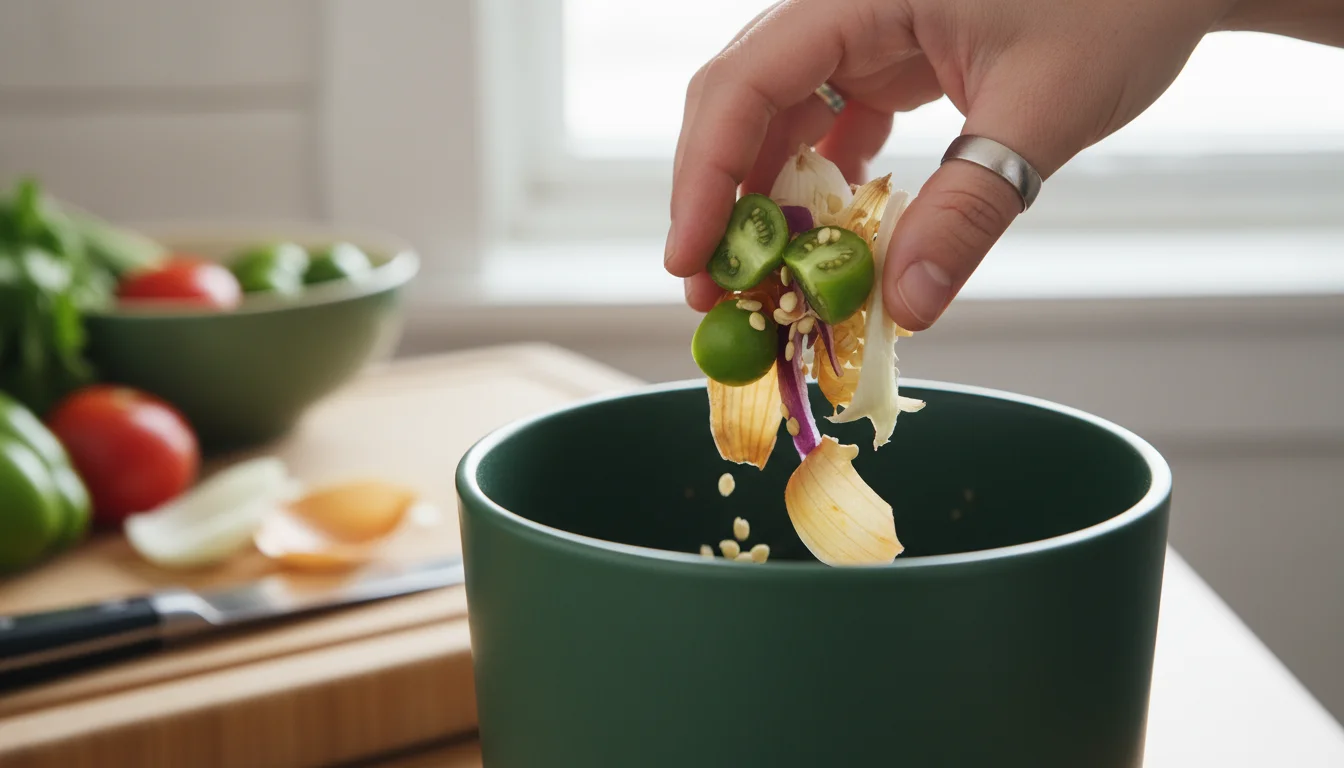
Eco-Friendly Tips for Your End-of-Season Harvest
At SimpleGardenJoy.com, we believe in gardening practices that are as kind to the planet as they are to your pantry. Maximizing your end of season harvest, especially by utilizing what to do with green tomatoes from container plants, inherently reduces waste. Here are some additional eco-friendly tips to consider as you wrap up your growing season and engage in small batch preserving:
- Compost Vegetable Scraps: All the bits you trim off your green tomatoes, onions, and bell peppers, along with any other vegetable trimmings, belong in your compost bin. Composting enriches your soil for future planting seasons, returning valuable nutrients to the earth and diverting organic waste from landfills. If you do not have a large compost bin, even a small kitchen composter can handle vegetable waste.
- Water Conservation During Preserving: While the water bath canning process requires a good amount of water, you can still be mindful. For instance, do not let water run unnecessarily during rinsing. When sterilizing jars, consider doing it efficiently, perhaps by running them through a hot cycle in a full dishwasher, which often uses less water than handwashing and boiling separately.
- Reuse and Recycle Jars: Investing in quality canning jars means you can reuse them year after year. Always replace lids, as they are single-use for sealing, but the glass jars themselves are durable. If a jar breaks, recycle the glass responsibly. This reduces the demand for new manufacturing.
- Energy-Efficient Cooking: When simmering your relish, use a pot size appropriate for the volume of food. A pot that is too large means more surface area for heat loss. Keep the lid on when bringing liquids to a boil to speed up the process and save energy. Once simmering, reduce heat to the lowest setting that maintains a gentle boil.
- Grow Next Year’s Crop Sustainably: As you reflect on your green tomato recipe success, consider what worked well in your container garden. Perhaps you can collect rainwater for irrigation next season or explore companion planting to naturally deter pests, reducing the need for chemical interventions. Learning from your current end of season harvest helps plan a more sustainable garden for the future.
- Share Your Bounty: If your small batch preserving yields more relish than you can reasonably consume, share it with friends, family, or neighbors. Sharing homemade food is a wonderful way to connect with your community and ensure your delicious green tomato recipe does not go to waste.
Every small action contributes to a larger positive impact. By making a conscious effort to garden and preserve sustainably, you demonstrate respect for your resources and your environment, truly embodying the spirit of preserving balcony vegetables.

Frequently Asked Questions
Can I use ripe tomatoes in this relish recipe?
While you certainly can use ripe tomatoes in a relish, this specific green tomato recipe is designed to highlight the unique tartness and firm texture of unripe green tomatoes. Ripe tomatoes would create a much sweeter, less tangy relish with a softer texture, altering the overall flavor profile significantly. If you want a ripe tomato relish, you would need to adjust the sugar and vinegar ratios to compensate for the difference in acidity and sweetness.
How long does this small batch preserving relish last?
If stored in the refrigerator, your green tomato relish will last for 2-3 weeks, sometimes up to a month, provided you keep it in a clean, airtight jar. If you process it using the hot water bath canning method, it can safely last for up to one year in a cool, dark pantry. Once opened, always refrigerate and consume within 2-3 weeks.
Do I need special canning equipment for this easy green tomato relish recipe for small harvest?
For short-term refrigeration, you do not need special canning equipment beyond clean jars with lids. However, for long-term, shelf-stable storage, a hot water bath canner (or a large pot with a rack) is recommended. This ensures proper sterilization and sealing, making your preserving balcony vegetables safe for extended storage at room temperature.
What if I do not have pickling salt?
Pickling salt is preferred because it is pure sodium chloride without anti-caking agents or iodine, which can cloud brines or discolor vegetables. If you do not have pickling salt, kosher salt is an acceptable alternative, as it is also pure salt. Do not use regular iodized table salt, as the iodine can affect the color and flavor of your relish.
Can I skip the salting step to save time?
Skipping the salting step is not recommended for this green tomato recipe. Salting is crucial because it draws out excess water from the vegetables, preventing a watery relish and concentrating flavors. It also contributes to a firmer texture. Without this step, your relish might be thin, less flavorful, and prone to spoilage due to higher water content. It is a foundational technique for a successful relish.
Your end of season harvest of green tomatoes from your container plants is not a gardening setback; it is an exciting opportunity. This easy green tomato relish recipe for small harvest transforms those tart, firm fruits into a delicious, versatile condiment that will brighten your meals for months to come. Embrace the tang, savor the flavor, and celebrate your success in preserving balcony vegetables with this vibrant green tomato recipe. You have turned your garden’s final gift into golden goodness.
For trustworthy gardening information, visit:
Pollinator Partnership, International Society for Horticultural Science (ISHS), Plantlife (UK) and Botanical Society of America. These organizations provide expert, research-based advice for gardeners at all levels.
Disclaimer: This article is for informational purposes only and is not a substitute for professional gardening advice. Always consult local extension services or horticulture experts for region-specific guidance.
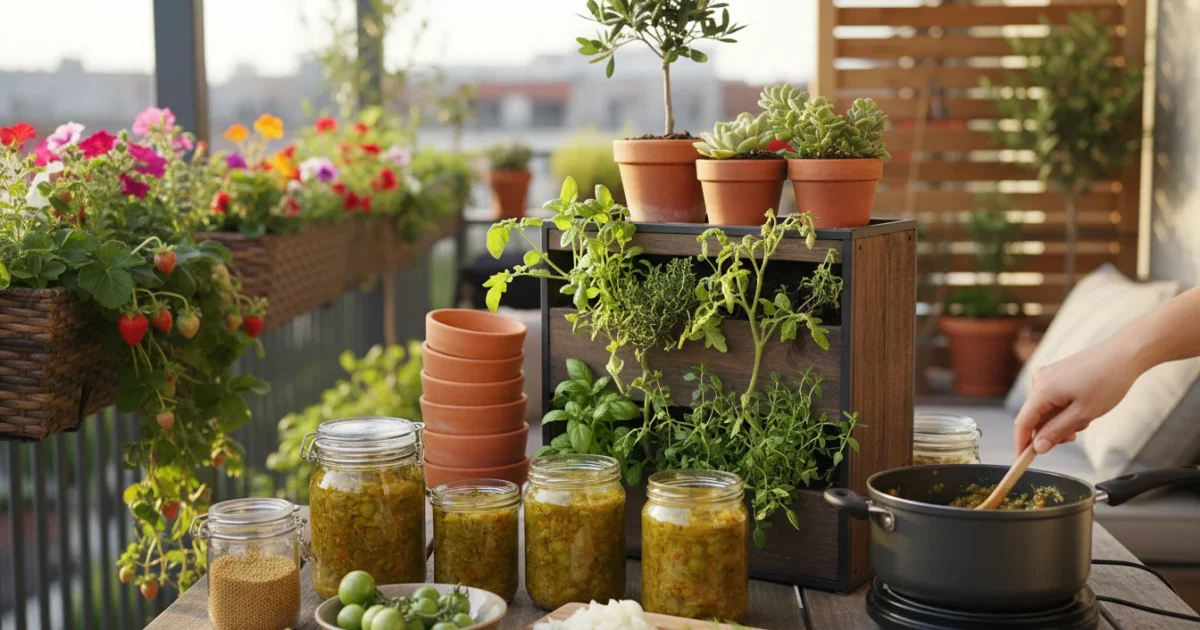

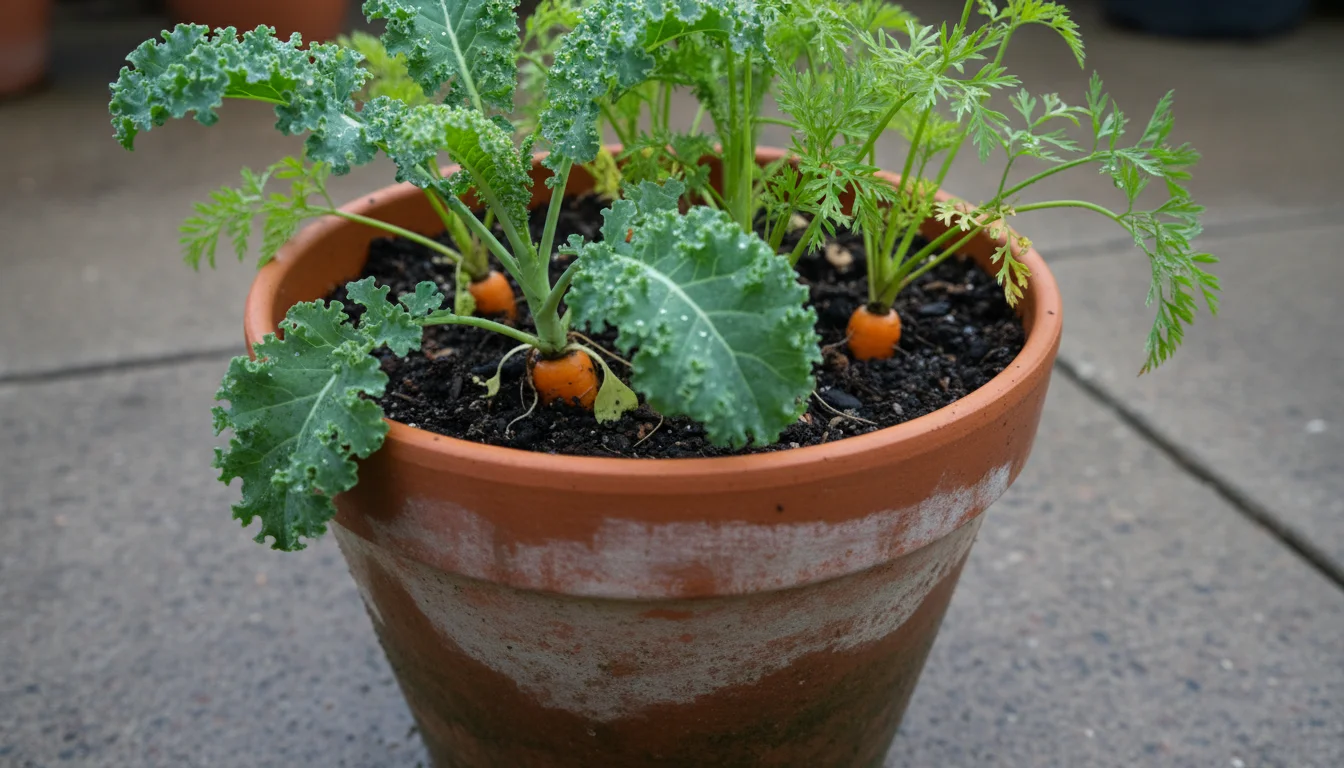

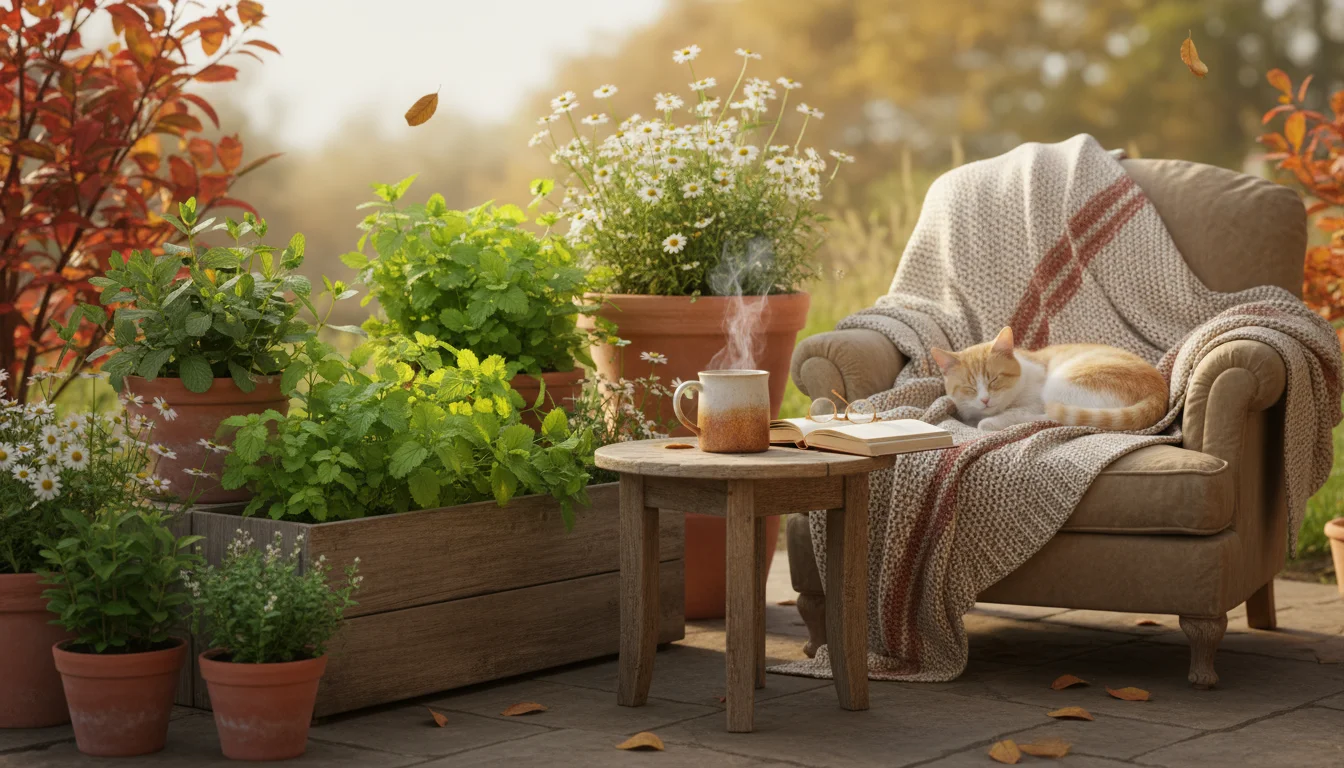
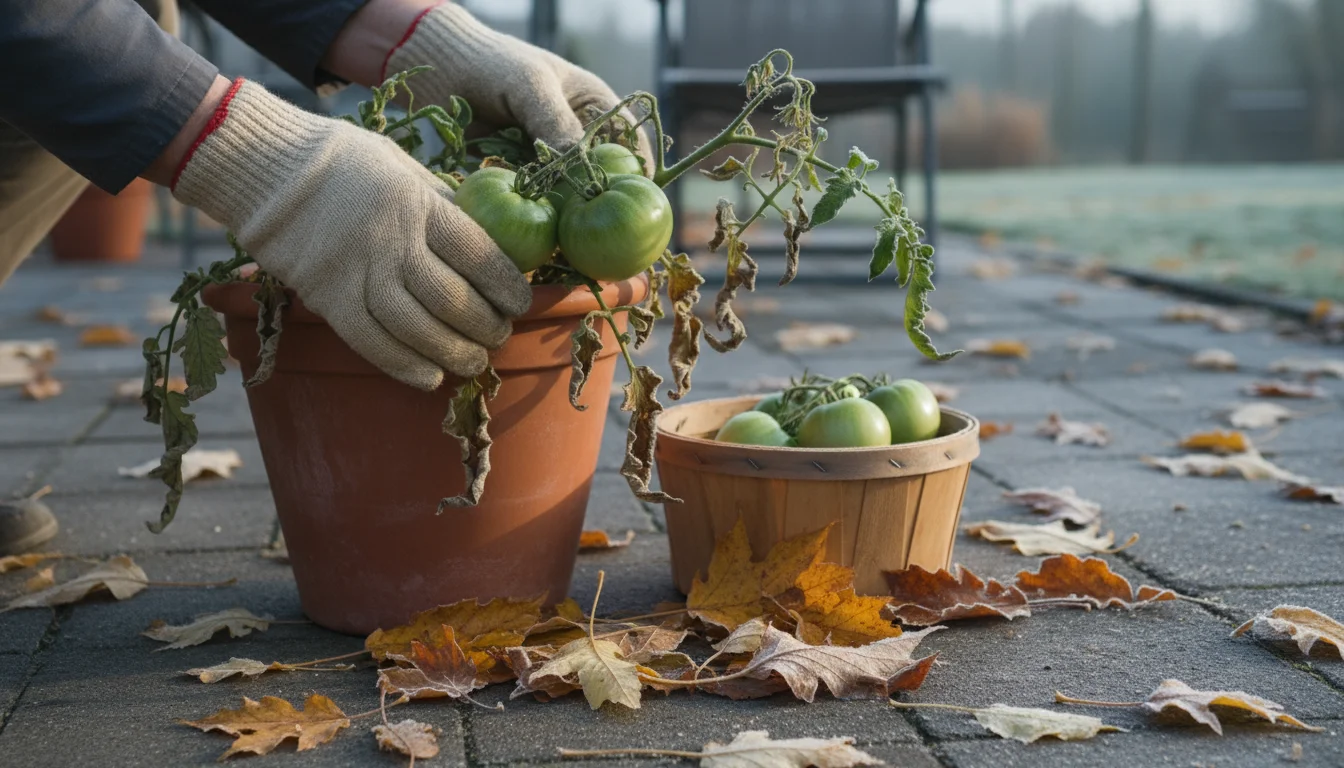

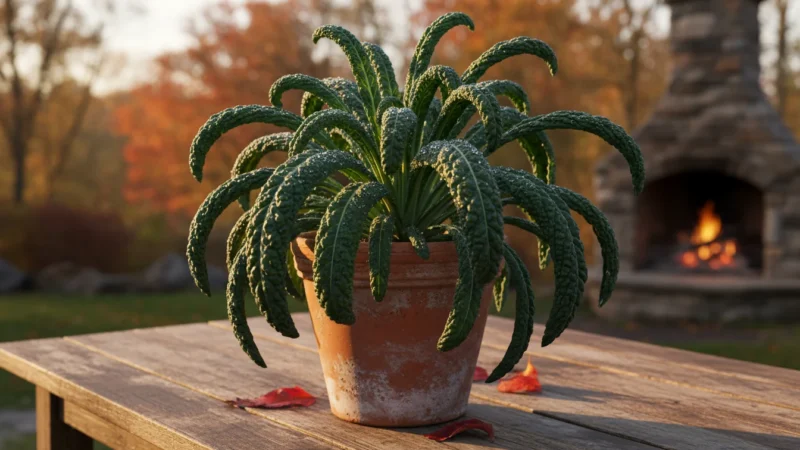
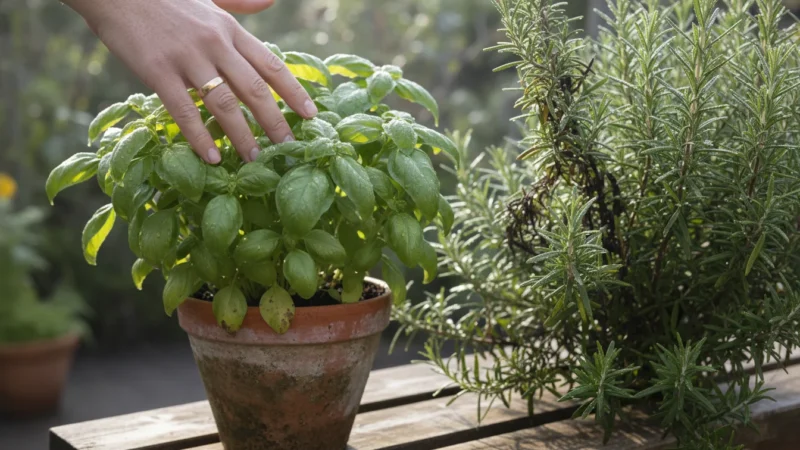

Leave a Reply